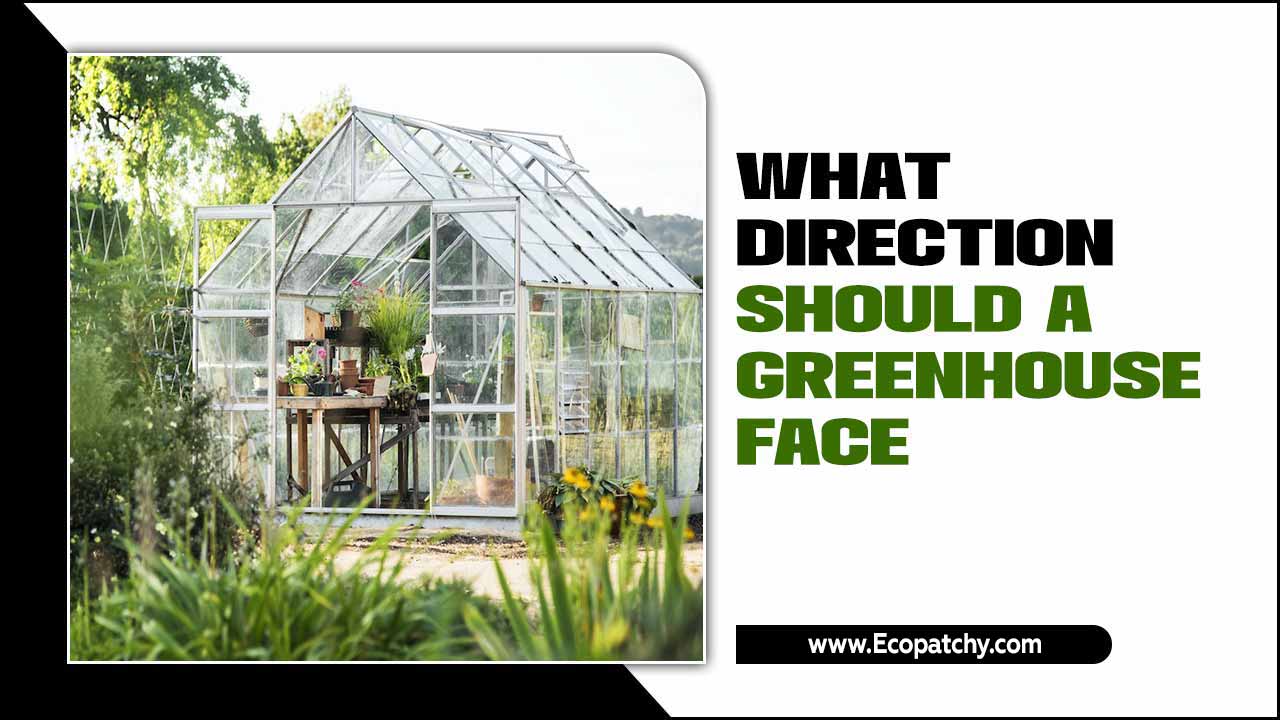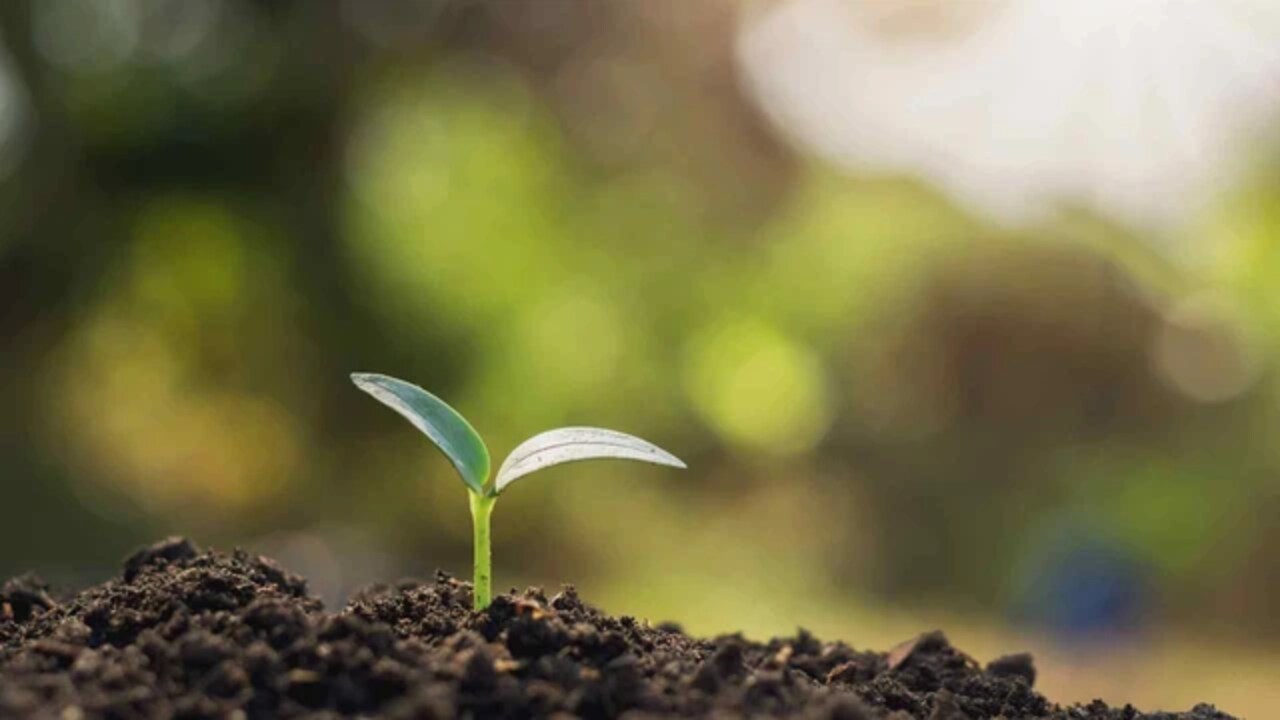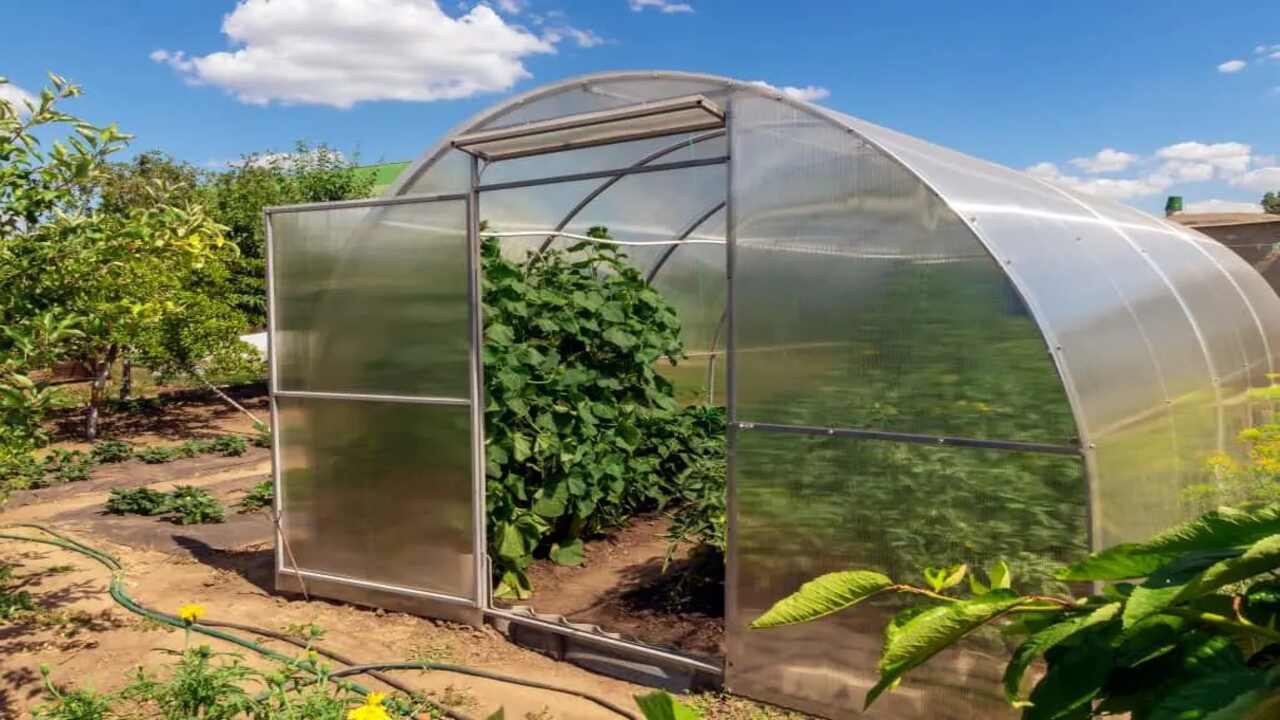Greenhouses have been used centuries to cultivate plants and extend the growing season in various climates. With the increasing popularity of sustainable living and growing your food, greenhouses have become an essential tool for many gardeners and farmers.
However, one crucial aspect often overlooked is the direction a greenhouse should face. The direction of a greenhouse can greatly impact the success of plant growth and overall energy efficiency. To produce the best possible yields while minimizing energy costs, it’s essential to consider the direction a greenhouse should face carefully. Here, we will discuss the what direction should a greenhouse face, as well as the benefits and drawbacks of different orientations.

The Basics Greenhouse Gardening
Understanding the basics of greenhouse gardening is crucial to maximize the potential of this specialized form of cultivation. Greenhouse gardening offers numerous advantages, such as extended growing seasons, controlled environments, and protection from adverse weather conditions.
However, without a solid understanding of the fundamentals, these benefits may go unrealized. Knowing the basics of greenhouse gardening allows individuals to create an optimal environment for their plants.
Factors such as temperature, humidity, and lighting all play a vital role in the successful growth of crops within a greenhouse. By understanding these variables, gardeners can make informed decisions regarding ventilation, heating, and shading, ensuring their plants thrive.
Why Is Light So Crucial?

Light is an essential component in the successful practice of greenhouse gardening. We cannot overstate the significance of light in this context. Greenhouse gardening relies heavily on photosynthesis, in which plants convert light into chemical energy to fuel their growth and development.
Without sufficient light, plants would struggle to carry out this crucial process, and their overall health and productivity would be compromised. One of the primary reasons why light is so crucial in greenhouse gardening is its role in providing the energy needed for photosynthesis.
The chlorophyll in plant cells absorbs light, particularly in the red and blue wavelengths, and converts it into chemical energy. Plants then utilize this energy to carry out various metabolic activities, such as producing sugars and carbohydrates necessary for growth and fruiting.
Orientation Vs Direction
The orientation refers to the positioning of the greenhouse about the cardinal points of the compass. In contrast, the direction refers to the side of the greenhouse facing a particular point. Both of these factors play a crucial role in the success and productivity of greenhouse gardening.
The orientation of a greenhouse is an essential consideration as it determines the amount of sunlight it receives throughout the day. Ideally, orient a greenhouse in an east-west direction to maximize exposure to the sun.
Similarly, the direction in which the greenhouse faces can impact its overall performance. South-facing greenhouses are ideal as they receive the maximum sunlight throughout the day. This allows for better temperature regulation and prevents the formation of shaded areas within the greenhouse.
What Direction Should A Greenhouse Face: 4 Best Ideal

Understanding the importance of the direction in which a greenhouse should face plays a crucial role in maximizing its efficiency and productivity. The orientation of a greenhouse directly impacts its exposure to sunlight, temperature regulation, and overall plant growth.
Knowing the ideal direction for a greenhouse is essential for optimizing sunlight exposure. As sunlight is the primary source of energy for plants through photosynthesis, proper positioning of the greenhouse ensures that plants receive an adequate amount of sunlight throughout the day.
By facing the greenhouse towards the south in the northern hemisphere or the north in the southern hemisphere, it allows maximum sunlight absorption. It minimizes shading from nearby structures or trees. Below, we discuss what direction should a greenhouse face.
1.South-Facing

When considering the optimal direction for a greenhouse to face, one significant factor that should be considered is the south-facing direction. This orientation offers numerous advantages that contribute to the overall success and efficiency of greenhouse operations. a south-facing greenhouse maximizes exposure to sunlight throughout the day.
As the sun moves from east to west, a south-facing greenhouse receives the most extended duration of direct sunlight. This is crucial for photosynthesis and ensures that plants receive the optimal light for growth and development. Additionally, the southern exposure helps to maintain a consistent temperature within the greenhouse by capturing the maximum amount of solar energy.
Benefits
- Increased sunlight exposure
- Improved temperature regulation
- Enhanced energy efficiency
- Extended growing season
- Improved plant productivity
2.East-Facing

Regarding choosing the optimal direction for a greenhouse, one consideration that often arises is the orientation towards the east. There are several compelling reasons why many experts recommend an east-facing direction for a greenhouse. An east-facing greenhouse allows for maximum exposure to sunlight during the crucial morning hours.
As the sun rises in the east, an east-facing greenhouse receives the first rays of sunlight, providing an early boost of warmth and light to the plants inside. This early exposure can significantly benefit the growth and development of plants, as it stimulates photosynthesis and kickstarts their metabolic processes.
Benefits
- Maximizes morning sunlight
- Promotes healthy plant development
- Efficient temperature regulation
- Extended growing sensation.
- Improved pest control
3.Southeast-Facing
the southeast-facing direction emerges as a superior choice. Many factors drive this choice, contributing to the efficiency and productivity of the greenhouse. One of the primary reasons for favouring a southeast-facing direction is the abundance of sunlight it provides.
By facing towards the southeast, the greenhouse is exposed to the early morning sun, allowing plants to receive ample light from the start of the day. This early sunlight is crucial for photosynthesis essential for plant growth and development.
Additionally, the southeast-facing direction ensures that the greenhouse is shielded from the harsh afternoon sun. As the day progresses, the sun moves towards the western sky, resulting in intense heat and potentially damaging rays. By facing southeast, the greenhouse receives maximum sunlight in the morning while avoiding the scorching midday heat.
Benefits
- Increased sunlight exposure
- Improved temperature regulation
- Enhanced ventilation
- Extended growing season
- Energy efficiency
4.West-Facing

There are several factors to consider when determining the optimal direction for a greenhouse, but many experts agree that a west-facing orientation offers numerous advantages. A west-facing greenhouse benefits from ample sunlight exposure during the afternoon and evening hours.
This is particularly advantageous for plants that thrive in warmer temperatures or require extended periods of sunlight to grow and develop properly. With the sun setting in the west, a west-facing greenhouse can harness the maximum sunlight, ensuring optimal growth and productivity.
Benefits
- Optimal sunlight exposure
- Extended daylight hours
- Temperature regulation
- Sunset views
- Flexibility in plant selection
Factors To Consider When Choosing Greenhouse Direction

When deciding to invest in a greenhouse, it is crucial to consider various factors that can greatly impact its overall efficiency and productivity. One of the most important aspects is the direction the greenhouse will face. The direction plays a significant role in determining the amount of sunlight the plants will receive throughout the day.
This, in turn, affects the growth and development of the plants. Other factors that should be considered when selecting the direction include prevailing winds, nearby structures that may cast shadows and proximity to trees or tall buildings.
Prevailing winds can impact the ventilation and temperature regulation inside the greenhouse, so it is important to position it in a way that minimizes the negative effects of strong winds. Shadows from nearby structures or trees can significantly reduce the amount of sunlight reaching the greenhouse, thus affecting plant growth.
1.Importance Of Maximizing Sunlight
Sunlight is crucial for the growth and development of plants, as it provides energy for photosynthesis. Therefore, it is essential to carefully choose the direction of the greenhouse to ensure it receives the maximum amount of sunlight throughout the day.
The direction in which a greenhouse faces has a significant impact on the amount of sunlight it receives. Generally, it is recommended to orient the greenhouse in a south-facing direction in the Northern Hemisphere, as this allows for maximum exposure to the sun’s rays. By facing the greenhouse towards the south it ensures that the plants inside receive optimal sunlight from morning to evening.
2.Effects Of Sunlight On Plant Growth
Sunlight plays a crucial role in the growth and development of plants as it provides the energy required for photosynthesis. The intensity, duration, and quality of sunlight influence a plant’s ability to produce food and nutrients.
Therefore, when designing a greenhouse, it is crucial to consider the direction in which it will be facing carefully. One factor to consider is the geographical location of the greenhouse. Different regions receive varying amounts of sunlight throughout the year, with some areas experiencing more intense sunlight than others.
The effects of sunlight on plant growth cannot be underestimated. When selecting the direction of a greenhouse, various factors such as geographical location, orientation, and potential shading need to be considered. By carefully analyzing these factors, one can create an optimal environment for plants to thrive and achieve maximum growth potential.
3.Sunlight Requirements For Different Plants
When considering growing plants, understanding their sunlight requirements is crucial for their successful growth and development. Different plants have varying preferences regarding the amount and intensity of sunlight they need. This is where the factor of choosing the direction of a greenhouse comes into play.
One of the key factors to consider when selecting the direction for a greenhouse is the availability of sunlight throughout the day. Ideally, the greenhouse should be positioned in a way that maximizes the exposure to sunlight. This ensures that plants receive the necessary light for photosynthesis, which is essential for their overall health and productivity.
4.Benefits Of Wind Protection
When selecting the direction for a greenhouse, it is crucial to consider the benefits of wind protection. Wind can have a significant impact on the overall performance and productivity of a greenhouse, making it essential to choose a direction that minimizes its negative effects.
One of the primary benefits of wind protection is preventing damage to plants and structures. Strong winds can easily uproot plants, break branches, or destroy the greenhouse infrastructure. By strategically positioning the greenhouse to avoid direct exposure to prevailing winds, growers can shield their crops from potential harm.
5.Effects Of Wind On Greenhouse Structure And Plants
Wind can have a significant impact on the overall stability and integrity of the greenhouse, as well as the growth and health of the plants. Therefore, it is essential to consider several factors when choosing the direction of the greenhouse. The prevailing wind direction in the area should be taken into account.
Understanding the predominant wind patterns will help determine the best orientation for the greenhouse. Placing the greenhouse perpendicular to the prevailing winds can help minimize the impact of strong gusts and reduce the risk of structural damage. Additionally, positioning the greenhouse in a way that maximizes airflow can be beneficial for plant health.
Conclusion:
The direction a what direction should a greenhouse face depends on several factors, including location, climate, and the types of plants being grown. While a south-facing direction is generally recommended for maximum sunlight exposure, it is important to consider other factors, such as wind patterns and shading from surrounding structures.
Ultimately, the best direction for a greenhouse will vary depending on individual circumstances, and it is important to carefully consider all factors before deciding. Consulting with a professional greenhouse builder or horticulturist can provide valuable insight and guidance. By carefully considering all aspects, you can ensure that your greenhouse is positioned for optimal growth and success.
FAQ:
1.Why Is It Important For A Greenhouse To Face South?
Ans: Facing south ensures that the greenhouse receives the maximum amount of sunlight throughout the day. This is crucial for the growth and development of the plants inside.
2.Can A Greenhouse Face Other Directions?
Ans: While the south is the preferred direction, a greenhouse can still be successful if it faces east or west. However, it may receive less sunlight and require additional measures, such as shading, to regulate temperature and light exposure.
3.Are There Any Considerations For The Location Of A Greenhouse?
Ans: Yes, it is important to consider the surrounding landscape and any potential obstructions that may cast shadows on the greenhouse. It would be best if you avoided trees, buildings, or hills to ensure uninterrupted sunlight.
4.How Does The Orientation Of A Greenhouse Affect Its Energy Efficiency And Temperature Regulation?
Ans: The orientation of a greenhouse can significantly impact its energy efficiency and temperature regulation. By facing the greenhouse towards the south (in the Northern Hemisphere) and the north (in the Southern Hemisphere), it can maximize sunlight exposure throughout the day, ensuring optimal plant growth and reducing the need for additional heating.
5.Are There Specific Geographic Considerations That Should Be Taken Into Account When Deciding The Direction A Greenhouse Should Face?
Ans: Yes, there are specific geographic considerations that should be taken into account when deciding the direction a greenhouse should face. The availability of sunlight should determine the direction of the greenhouse throughout the day. In the northern hemisphere, experts generally recommend facing the greenhouse towards the south to maximize sunlight exposure.
